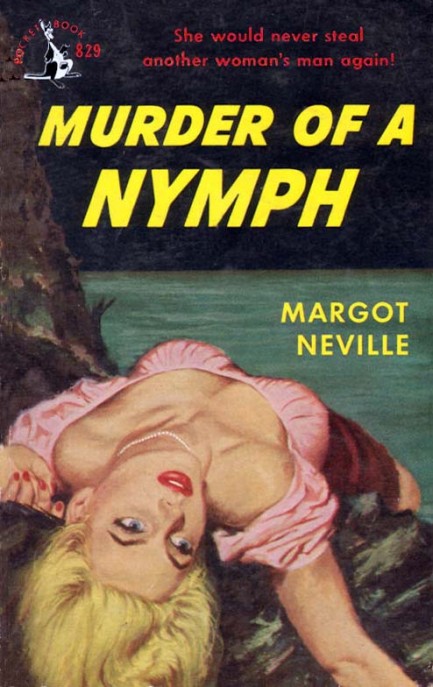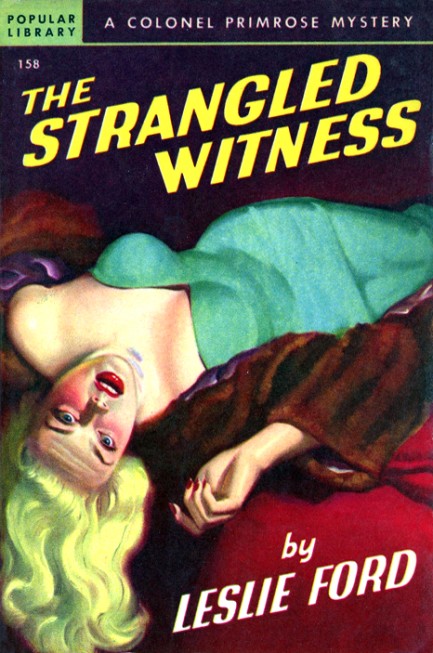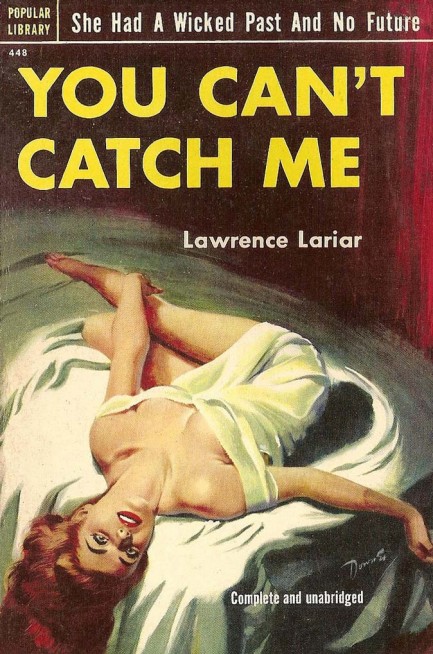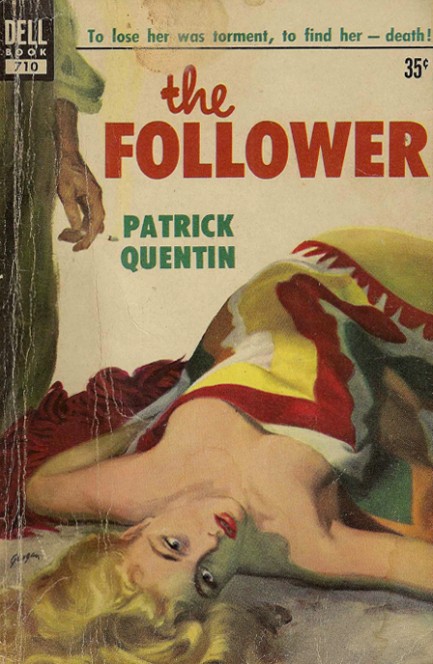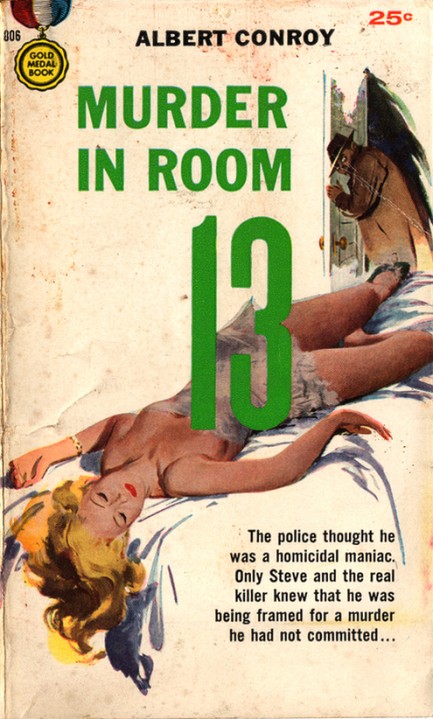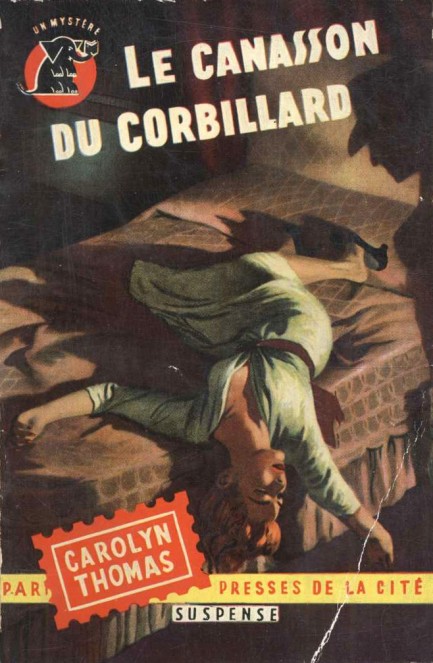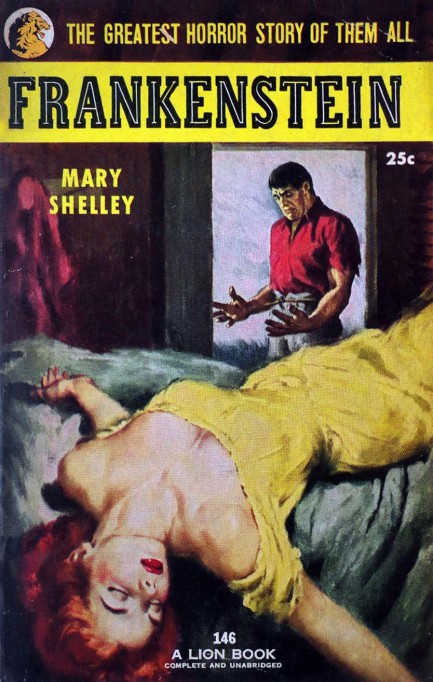 Knight falls in the City of Light. 
We weren't impressed with Adam Knight's Sugar Shannon, but excellent Paul Rader cover art earned him another chance with Girl Running, published in 1956 by Signet. It has the built in advantage of being set in Paris, but in the end we have to conclude that Knight just isn't a good writer. Here's a sample, and note that when he says “stay alive” he's talking about staying awake:
I beat it back to the hotel, fighting hard to stay alive for a little while longer. I lost the fight. A shower only rocked me for a brief pause. Then the important muscles gave way and fatigue took me to bed for a cat nap. I told myself that I could sleep two hours. I phoned the desk to jerk me awake at about noon. Then Morpheus grabbed me.
Knight's main character goes to sleep three times in that paragraph—or twice, if we want to be generous. Also, the idea of a “cat nap” is incongruous with total fatigue. A cat nap is light sleep. Even sleeping for only two hours, he'd be dead to the world. The snippet is a microcosm of the book—messy, disarranged, and lacking flow and rhythm. So when it comes to Knight we'll call it a day. He's just not our thing.
 Flee for your life like the Romans do. 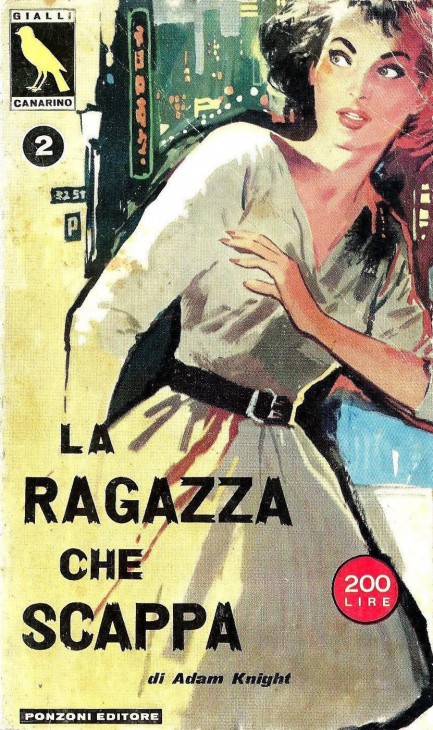
Carlo Jacono painted this brilliant cover for La ragazza che scappa, or “the girl who runs away,” written by American author Adam Knight, aka Lawrence Lariar, for Ponzoni Editore's series Gialli Canarino, with the translation chores handled by Lydia Lax. We read a Knight book a while back, weren't impressed, and forgot about him, but here he is earning a translation into Italian. Does that mean the book is good? We've always assumed without evidence that translations were an indicator of quality, but now we have doubts. Or maybe that limp Knight yarn we read wasn't typical of his work. La ragazza che scappa was originally published in 1956 in the U.S. as Girl Running. We could probably find it if we wanted to, so we will actually consider picking up a copy if it's out there cheap. We're just curious enough.
 The Sugar high doesn't last. 
This eye-catching cover for Adam Knight's 1960 mystery novel Sugar Shannon was painted by an uncredited artist. The image lured us toward a purchase, and reading the book we immediately discovered that the main character is supposed to be a sort of Honey West clone. We didn't think much of This Girl for Hire, the book that introduced West to the world, so a derivative version was probably never destined to thrill us. And indeed, the whole thing—which involves the title character and her sidekick Gwen trying to solve two murders in the New York City art underground—is pretty silly, and more than a little condescending. For instance, Knight makes constant references to Sugar's “girlish instincts,” “womanly intuition,” and “feminine corpuscles" (huh?), suggesting his investigative reporter heroine works less by logic than by a sort of gender-based magic. Sugar Shannon was supposed to be the first book of a series, but it turned out to be a series of one. That says it all.
|
 |

The headlines that mattered yesteryear.
1927—Mae West Sentenced to Jail
American actress and playwright Mae West is sentenced to ten days in jail for obscenity for the content of her play Sex. The trial occurred even though the play had run for a year and had been seen by 325,000 people. However West's considerable popularity, already based on her risque image, only increased due to the controversy. 1971—Manson Sentenced to Death
In the U.S, cult leader Charles Manson is sentenced to death for inciting the murders of Sharon Tate and several other people. Three accomplices, who had actually done the killing, were also sentenced to death, but the state of California abolished capital punishment in 1972 and neither they nor Manson were ever actually executed. 1923—Yankee Stadium Opens
In New York City, Yankee Stadium, home of Major League Baseball's New York Yankees, opens with the Yankees beating their eternal rivals the Boston Red Sox 4 to 1. The stadium, which is nicknamed The House that Ruth Built, sees the Yankees become the most successful franchise in baseball history. It is eventually replaced by a new Yankee Stadium and closes in September 2008. 1961—Bay of Pigs Invasion Is Launched
A group of CIA financed and trained Cuban refugees lands at the Bay of Pigs in southern Cuba with the aim of ousting Fidel Castro. However, the invasion fails badly and the result is embarrassment for U.S. president John F. Kennedy and a major boost in popularity for Fidel Castro, and also has the effect of pushing him toward the Soviet Union for protection.
|

|
|

It's easy. We have an uploader that makes it a snap. Use it to submit your art, text, header, and subhead. Your post can be funny, serious, or anything in between, as long as it's vintage pulp. You'll get a byline and experience the fleeting pride of free authorship. We'll edit your post for typos, but the rest is up to you. Click here to give us your best shot.

|
|







